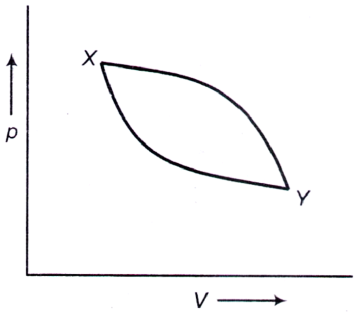The internal energy of n moles of a gas is given $$E = \frac{3}{2}nRT - \frac{a}{V},$$ where V is the volume of the gas at temperature T and a is a positive constant. One mole of the gas in state (T1, V1) is allowed to expand adiabatically into vacuum to a final state (T2, V2). The temperature T2 is
A. $${T_1} + \frac{a}{R}\left( {\frac{1}{{{V_2}}} + \frac{1}{{{V_1}}}} \right)$$
B. $${T_1} - \frac{2}{3}\frac{a}{R}\left( {\frac{1}{{{V_2}}} - \frac{1}{{{V_1}}}} \right)$$
C. $${T_1} + \frac{2}{3}\frac{a}{R}\left( {\frac{1}{{{V_2}}} - \frac{1}{{{V_1}}}} \right)$$
D. $${T_1} - \frac{1}{3}\frac{a}{R}\left( {\frac{1}{{{V_2}}} - \frac{1}{{{V_1}}}} \right)$$
Answer: Option C


Join The Discussion